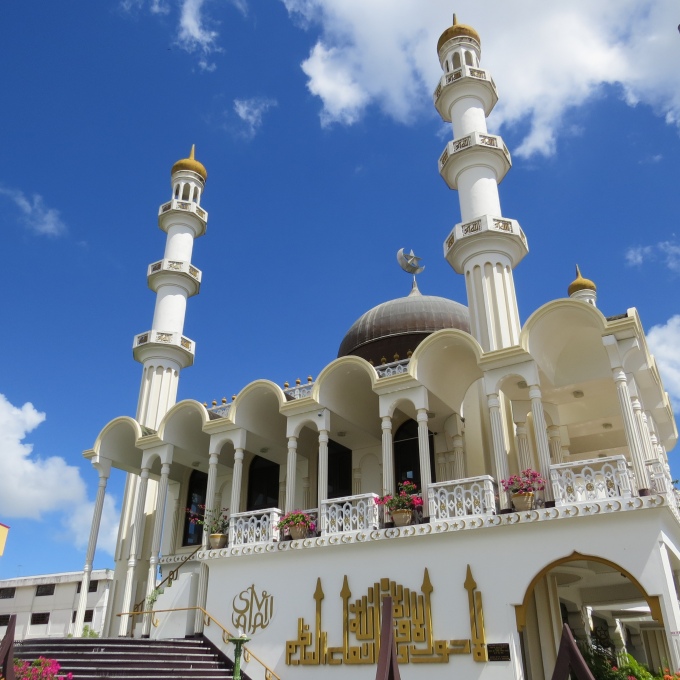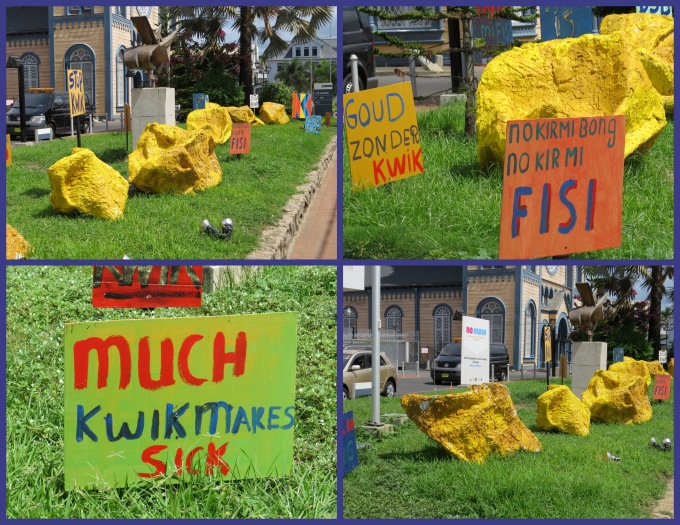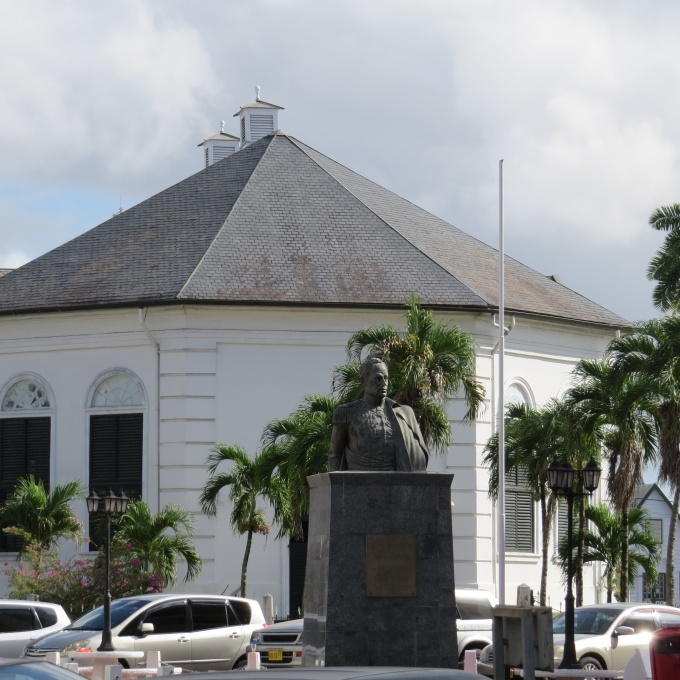Cathedrals, Mosques and Temples in Paramaribo
/ The mix of nationalities, ethnicities and cultures in Suriname lends itself to a religious diversity that is profound. “There is no predominant religion in the country. Christianity, both in the form of Roman Catholicism and variations of Protestantism, is dominant among Creoles and Maroons. Most of the Hindustani are Hindu, but some practice Islam or Christianity instead. The Javanese mostly practice either Islam or Christianity. With 20% of the population, Suriname has the largest Muslim community by percentage in the New World [the Americas].”
The mix of nationalities, ethnicities and cultures in Suriname lends itself to a religious diversity that is profound. “There is no predominant religion in the country. Christianity, both in the form of Roman Catholicism and variations of Protestantism, is dominant among Creoles and Maroons. Most of the Hindustani are Hindu, but some practice Islam or Christianity instead. The Javanese mostly practice either Islam or Christianity. With 20% of the population, Suriname has the largest Muslim community by percentage in the New World [the Americas].”
In most every what-to-do-in-Paramaribo article and brochure we read, the Synagogue situated next to the Mosque, demonstrating Suriname's religious tolerance, was a must-see and it was pretty impressive.
The Jewish community in Paramaribo is quite small (~2,700) and reputed to be the oldest continuing Jewish community in the Americas. The wooden Neve Shalom Synagogue dates from 1835, replacing a previous one built in 1719. The original Jewish settlers here were descendants of Jews fleeing persecution during the Spanish Inquisition in Europe. We did not visit, but we learned that one of the unique features of this particular Synagogue is its floor of sand, a reminder of the 40 years in the desert after the Jews' exodus from Egypt.
Next door and purportedly sharing a parking lot, stands the grand Ahmadiyya Anjumar Insha'at Islam Mosque. The mosque, reportedly the largest in the Caribbean, took 20 years to build as the use of machinery was not allowed and everything had to be constructed by hand.
The yellow and grey painted St. Peter and Paul Cathedral is touted as not only the biggest wooden structure on the South American continent, but in the entire Western Hemisphere. Building started in 1883, but the towers were not finished until 1901.
The Cathedral was open for viewing and we popped inside for a visit. The interior was unbelievably impressive with elaborately crafted, unpainted cedar wood in a Surinamese design. The columns, pillars and even the Stations of the Cross were carved. Notably, there is no stained glass in the windows. The building was condemned in 1989. Grants provided by the Vatican and the EU and fund-raising efforts led to restoration of the termite-ridden, deteriorated building between 2007-2010. We noted scaffolding still in place indicating the work in progress. One other piece of trivia … the original organ remains in place, however most of its pipes have been stolen.
Though irrelevant to religious activity, just beside the Cathedral in front of the Suriname Bank, there was a protest and large display against the use of quicksilver (mercury) in the gold mining industry because of its devastating effects on the environment.
The Centrumkerk is distinctively octagonal and dates from the early 19th century. It has been a church, a center for the aging, a state church, one of the Parliament buildings at Independence in 1975 and is now listed as a World Heritage building.
We spotted ornate Hindu temples throughout the city and along the roadside on the way from Domburg to Paramaribo. Small, personal, family temples were visible from the road.
Though we're not religious people (except for the Neptune tribute thing maybe), we appreciate the differences in people's beliefs and their methods of worship. Suriname's people seem to have a unique understanding of religious tolerance and freedom, a commendable trait that could be learned and practiced by many. Just sayin'...
Today's Dutch word – kerk - church










